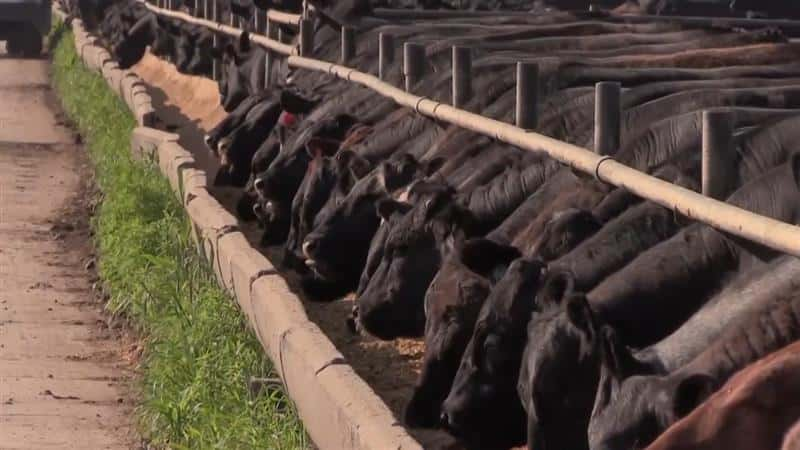Dr. Nathan Pyatt, Beef Technical Consultant with Elanco spoke with Northern Ag Network’s Brett McRae about some of the factors weighing on feedlot margins and profits for cow calf producers. Pyatt serves customers in various segments of the industry in the mid-west and northern plains.

Although some areas of the Northern Plains and Mountain west have received significant amounts of precipitation, evidenced by the severe flooding in south central Montana and Northwestern Wyoming, many parts of the region are still in extreme drought.
Dr. Pyatt said that limited forage resources will continue to influence management decisions for producers going forward.
“If we would have come back with the same stocking and grazing rates, we probably would have regretted it because of drought and price levels for cash crops. So, we’ve sold those animals off and we have a fragile resource in the forage base until grass comes back, but in this case, we’ve been able to save on feed costs to purchase animals again in the future.”
Pyatt concluded that feeder calf prices may support the opportunity for cattle producers to buy producing cows and heifers, but feed costs and forage concerns may continue to prohibit those purchases.
“That’s what most people are thinking about, we’ve down sized in the short term but we’ve saved that money in terms of feed and fertilizer costs. When do we buy back in? is the main question most producers have right now.”
According to Nathan, corn prices started to increase in the fall of 2020 beginning to impact costs-of-gain for cattle feeders.
“Elanco Benchmark is a feed yard program that captures about 50 percent of the cattle on feed across the United States… in the Northern Plains Region we went from 200 dollars/dry ton ration price in the fall of 2020 to the most recent data indicating more the 320 dollars/dry ton which translates to about 1.15 cost of gain on those April close outs.”
Dr. Pyatt says that optimizing animal health and performance has allowed feed lots to remain profitable amid higher input costs.
“In the case of Elanco’s products, we’re seeing a lot more interest in increasing rumensin dose and optaflex, these are technologies that focus on improving performance, feed efficiency and ultimately lowering cost of gain.”
Nathan stated that the longer cattle are on feed the less efficient they become, losing a tenth of cumulative feed efficiency for every week an animal is on feed past its optimal finish date.
“We’re trying to find a way to get to that quality grade, get to that higher carcass weight end point, but get there more efficiently to save some of those feed efficiency dollars to put back in our pocket.”
###
Northern Ag Network


